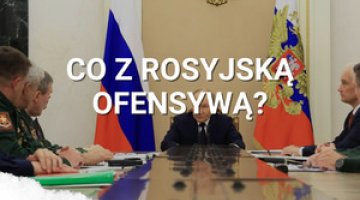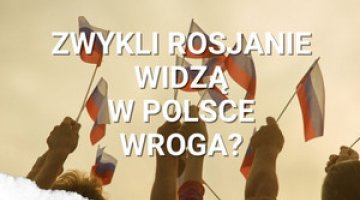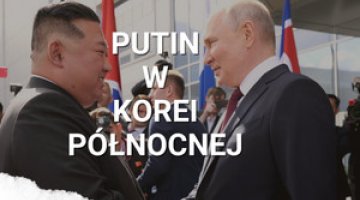Russia’s attack on Ukraine: day 125

Russian forces continue to advance southwest of Lysychansk (in the Vovchoyarivka–Verkhn’okam’yanka area), while they have been halted on the western side of the ‘road of life’ (near the village of Spirne). Fighting is ongoing on the outskirts of Lysychansk and south-east of Bakhmut (Midna Ruda–Klynove; the invaders have fortified themselves in the northern part of the village of Klynove, as well as in the area of the Vuhlehirsk CHP). The defenders repulsed further assaults north of Slavyansk and south and north of Kharkiv (Dovhalivka-Zalyman, Dementivka). The aggressor is reinforcing a grouping in the Novopavlivka direction in the western part of the Donetsk Oblasts, moving one battalion tactical group (BTG) each from the Avdiivka and Bakhmut areas. An additional BTG was also to move to the direction of the Kryvyi Rih. South of Zaporizhzhia, Ukrainians are fighting diversionary and reconnaissance groups trying to penetrate the defence lines.
The Russians continued to shell and bombard enemy positions and facilities along the entire line of contact (including renewed shelling of the Kryvyi Rih CHP after a break of several weeks) and in the border areas of the Chernihiv and Sumy oblasts. Strikes were intensified on Kharkiv, Mykolaiv and Sloviansk, which also became the target of cruise missiles. In addition, rocket attacks took place in Dnipro (railway infrastructure and a transport company with a fuel depot were destroyed) and in the Synelnykove Raion of Dnipropetrovsk Oblast, as well as in the vicinity of Odesa and the Izmail Raion of Odesa Oblast. The defenders reported that some rockets had been shot down, as well as their own strikes on enemy positions on the border of Mykolaiv and Kherson oblasts and on Snake Island. The Ukrainian side confirmed that during the attack on Kremenchuk the previous day, not only the shopping centre, but also the industrial infrastructure was damaged.
Defence Minister Oleksii Reznikov provided information on the process of training Ukrainian soldiers in the use of armaments acquired from the West, which has been ongoing since April. They are learning to operate 155 mm calibre howitzers and cannon howitzers (towed M777 and FH-70, on CAESAR vehicle chassis, and self-propelled M109, PzH 2000 and Krab), armoured personnel carriers (tracked М113 and FV-103 Spartan and wheeled VAB) and armoured cars (Bushmaster, Husky, Mastiff, Senator and Wolfhound), as well as the self-propelled artillery anti-aircraft set Gepard 1A2. In recent weeks they have begun training on multi-track missile launchers (M142 HIMARS, M270 and MARS II), M80A infantry fighting vehicles and Sandown minesweepers. Reznikov reported that ‘thousands of soldiers’ had been trained, and named the organisers of the venture: Britain, Italy, Lithuania, Poland, Slovakia, Slovenia, France and Germany. In addition, the basic training of Ukrainian soldiers in the UK began this week (the ‘first few hundred’ were expected to attend, and in total the participation of ‘over a thousand’ was assumed).
The defence ministry chief also announced that Ukraine would receive a batch of Turkish Bayraktar combat UAVs in July. After 24 February, the army has already received approx. 50 drones of this type have already been handed over to the army after 24 February, and dozens more are planned to be ordered. French Defence Minister Sébastien Lecornu confirmed that Kiev will receive a ‘significant number’ of VAB wheeled armoured personnel carriers, as well as an additional six CAESAR howitzers to equip a full squadron (the French had previously handed over 12 of these; in the Ukrainian army, an artillery squadron consists of three batteries with six barrels in each). The delivery of a further six PzH 2000 howitzers was also announced by the heads of the defence ministries of Germany – Christine Lambrecht – and the Netherlands – Kajsa Ollongren (so far the invaded country has received seven German and five Dutch Panzerhaubitze 2000).
The Security Service of Ukraine detained in Lviv a retired USSR KGB officer who provided data useful in correcting Russian missile attacks. He was particularly interested in military facilities located on the training ground in Yavoriv, the coordinates of which he passed on to the invaders. They also received information from him regarding the organisation of an international volunteer legion to support the Ukrainian army. In Kiev, SBU counterintelligence officers captured a man who was correcting the aggressor’s rocket attacks on the capital, and in the Donetsk Oblasts, an agent collecting data on the defenders’ positions in the Bakhmut region.
Digital Transformation Minister Mykhailo Fedorov has announced the launch of the ‘Drone Army’ project. The programme is to cover the purchase of drones abroad for the needs of the armed forces, as well as the training of drone operators and equipment repair personnel. Funds for the venture will come from the state budget and fundraising programmes.
The head of the Russian Investigative Committee, Alexander Bastrykin, has announced the suspension of the exchange of prisoners of war. The reason for this decision is that they must be interrogated in advance by investigative teams gathering information that may indicate that they committed ‘war crimes’. Bastrykin did not rule out the possibility that the captives would have to compensate for material damage in cities destroyed during the hostilities. He did not give details, but it is possible that Ukrainian soldiers will be forced to participate in public works or in demining of towns occupied by the Russians.
The collaborationist authorities have once again confirmed that the so-called annexation referenda may be held on 11 September. They will cover both so-called people’s republics (Donbass and Luhansk) and the occupied territories of Kherson and Zaporizhzhia oblasts. The occupation administrations were instructed to prepare premises for the referendum commissions and to recruit residents ready to join them. The annexation is to be facilitated by speeding up the passportization of the local population. On 28 June, a draft was sent to the State Duma, envisaging the adjustment of the Law on Citizenship of the Russian Federation in terms of simplifying procedures specifically for Ukrainians. An applicant for a Russian passport will sign a statement renouncing Ukrainian citizenship.
The UN Security Council has convened an urgent meeting to discuss the situation in Ukraine. Six (out of 11) members of the RC (US, UK, France, Norway, Ireland and Albania) issued a statement condemning Russian missile attacks on Ukrainian cities, including the shopping centre in Kremenchuk. President Volodymyr Zelensky addressed the meeting by video, calling for the Council to introduce a legal definition of ‘state terrorism’ and apply it to Russia. He also stressed the need to deprive the delegation there of its status as a permanent member of the UNSC and its mandates in the General Assembly, and to establish a tribunal on Russian crimes.
Ukrainian investigative journalists have provided information confirming Gazprombank’s involvement in the financial handling of Russian troops fighting in Ukraine. The bank, whose accounts receive payments from European countries for gas and oil, has not been disconnected from the SWIFT system as part of the sanctions, even though it is through it that the aggressor’s troops receive not only their pay but also their combat allowance.
Ukraine’s population could shrink by a third, says a NoBrainerData report funded by the EU Council. This trend is mainly due to the consequences of the ongoing war – increased mortality, falling fertility, increased emigration to the West, deportations to Russia and the likelihood of losing some territory. The authors estimate that, depending on the duration of the invasion, the population of the invaded country will decrease by a total of 24–33%. According to the UN, between 1990 and 2020, Ukraine’s population shrank by 10.7 million people, or 20%.
Commentary
- Minister Reznikov’s information highlights the problems generated by the allied support for Ukraine. The Ukrainian army is receiving only specific categories of heavy weaponry (mainly barreled artillery and armoured vehicles which are not combat vehicles), which, taking into account the losses it has sustained, leads to a widening disparity in equipment. Moreover, it is provided with armaments of various types, based on technical solutions specific to the needs of the main recipients and requiring a separate mode of training. Soldiers operating American-made self-propelled howitzers cannot ‘at once’ (without basic training) reinforce a subunit which uses their German or Polish equivalents. In addition to the problems of a military nature, the observed diversity of armaments significantly increases the costs of their use and servicing, which would become noticeable for Ukraine in the event of a reduction in external financial support. In the event of a decision to take back the lost territories militarily, Kyiv will have to decide on the greatest possible standardisation of equipment and – in the event of the destruction of the Ukrainian arms industry – on the choice of its main suppliers.
- The acceleration of work on organising the 11 September annexation referendums proves that the authorities consider them to be one of the main political objectives aimed at confirming Russia’s ‘victory’. At the same time, the invaders attach great importance to the ‘de-Ukrainisation’ of the inhabitants of the occupied territories by forcing them to take Russian citizenship in a simplified procedure. The invaders’ intention is to encourage the population to take up work in the local power structures and to restrict those who refuse to renounce their Ukrainian citizenship from earning a living. The aim is to divide the population into two groups – those who accept and those who contest the annexation plans – and to make it easier to identify declared opponents of Russia.




